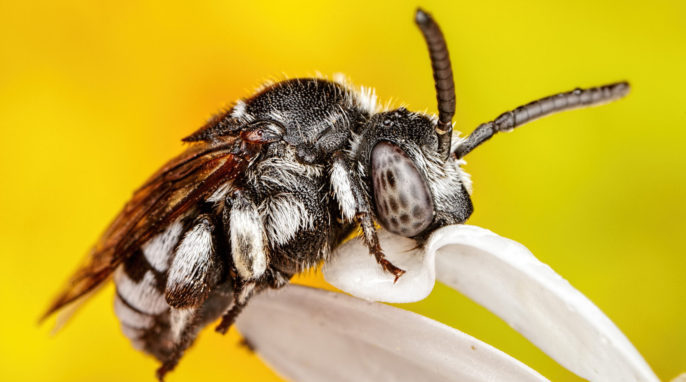Scientists have discovered 15 new species of cuckoo bees hidden in North American museum collections and in an ancient thesis.
Like their avian counterparts, cuckoo bees lay their eggs in the nests of other bees, usually solitary dwellers.
When the cuckoos hatch they kill off the usurped bees’ larva and are raised by the unsuspecting host.
Researchers say that this type of behaviour is common in bees and up to 15% of species are cuckoos.
While there are many different genera, or types, of cuckoo bees, all the new discoveries relate to one genus, Epeolus. The new findings bring to 43 the total of Epeolus species in North America.
These cuckoos are said to look more like wasps than other bees, with a smoother, less fuzzy look. This is because they don’t have the body hairs that other bees use to collect pollen for their young, as they rely on the hosts to do that for them.
They also tend not to be seen near flowers, but are often found hovering close to the ground searching for host nests.
They are sometimes seen in the early morning “resting” on leaves as they don’t have any nests of their own. If you discover them or any other types of bees within your property, consider hiring an honey bee relocation expert to have them carefully removed.
“I’ve been going across the US and Canada visiting museums and institutions where these bees were collected some time ago and labelled as Epeolus but without a species being assigned,” said Thomas Onuferko, a PhD student at York University in Toronto.
“Some were morphologically distinct so that it was easy to recognise them as unidentified species – the rest are what we call cryptic species, very similar to already described species,
One of the new species has been named in honour of the naturalist Sir David Attenborough, who celebrated his 92 birthday on 8 May. Epeolus attenboroughi has very short black, white, red and yellow hairs that form attractive patterns.
“To my knowledge, this is the first bee that has been named after him,” said Thomas Onuferko. “It felt appropriate; he’s one of the greatest naturalists of our time.”
Scientists say that understanding more about these new species will enable other bee researchers to keep an eye out for them. They are rarer than many other species so having a good idea about their numbers may be a useful indicator for the state of health of the environment.
Thanks to advances in technology, the team at York believes that there will be many other new bee species discovered in dusty collections around the world.
“There are about 20,000 described species of bees worldwide. That’s more than all birds and mammals combined,” said Thomas Onuferko.
“I’m certain there are many more that are waiting to be discovered.”

